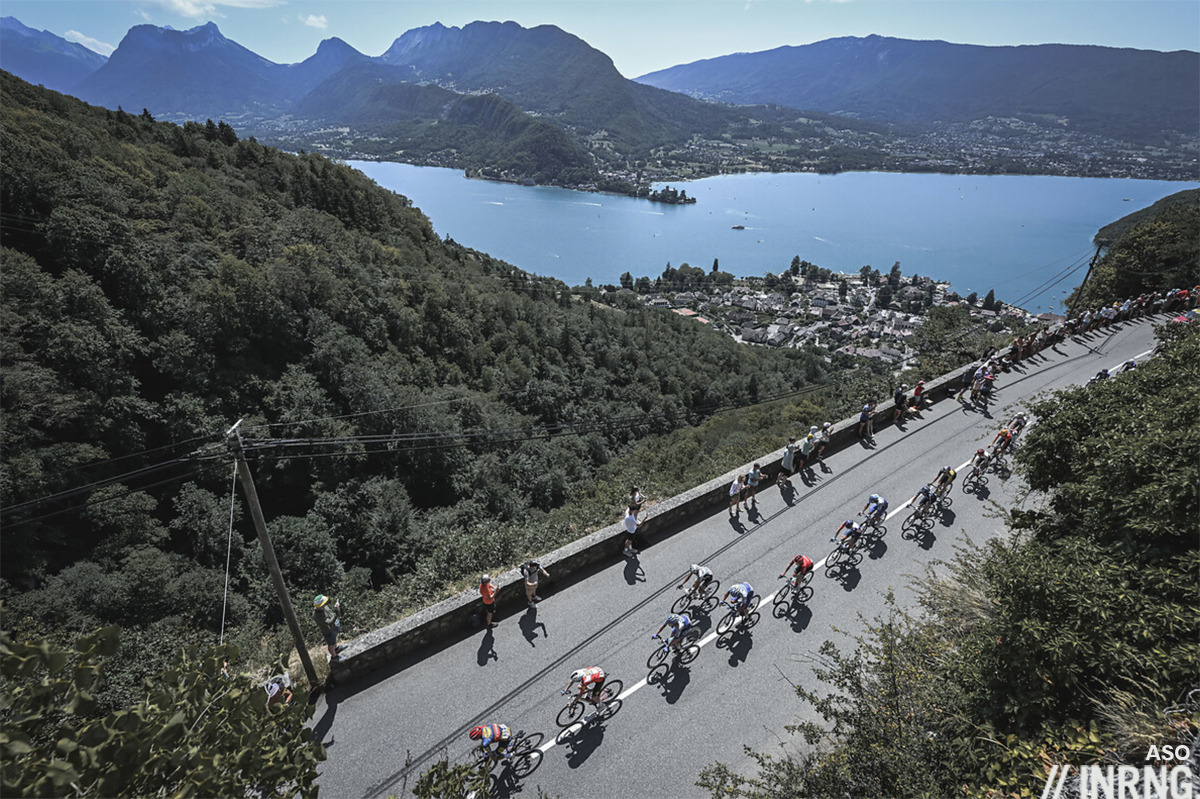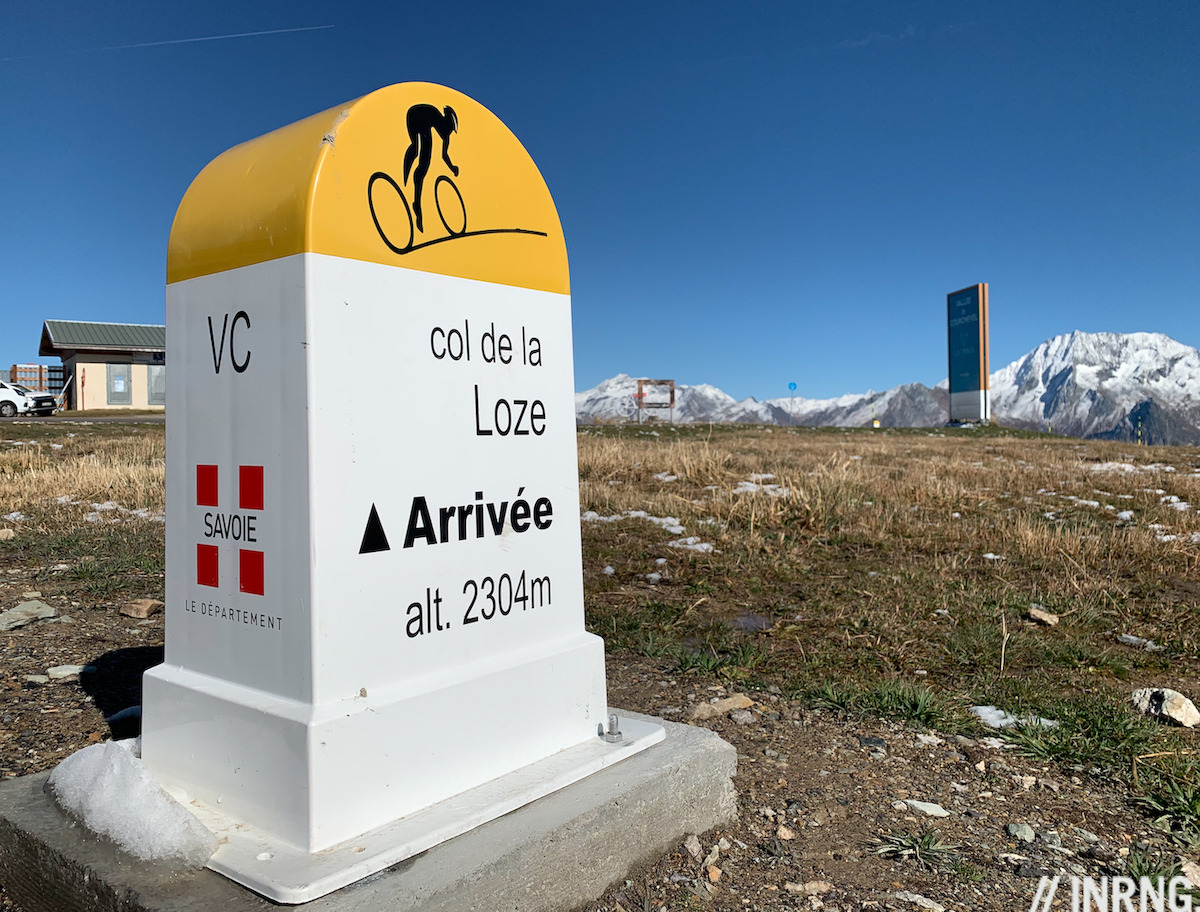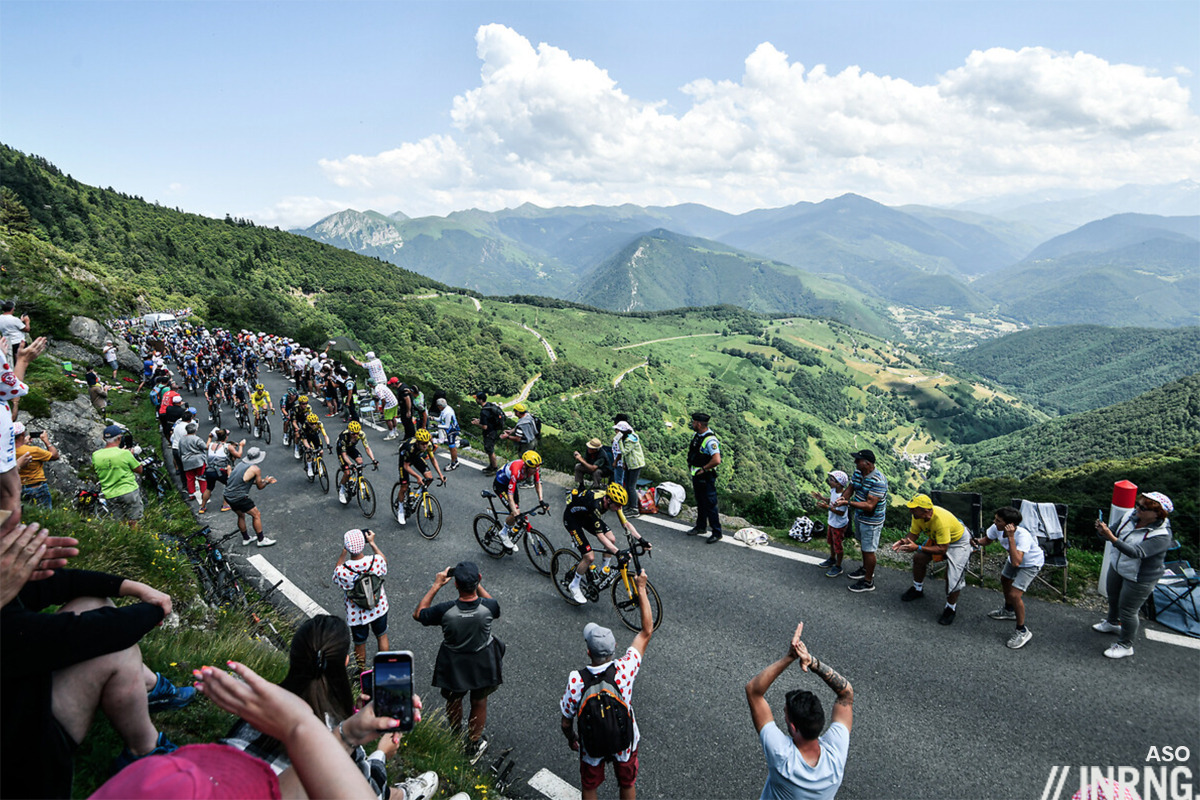These two mountain ranges have their differences but the Tour de France can struggle to explore the subtleties. If you’re faced with trying to pick one over the other, it’s less one versus the other and more about where within each range you go.
In terms of geography the Alps are bigger, spanning from Nice around a long arc north and back down to Slovenia. In France alone it’s a huge swathe of land, the Route des Alpes from north to south can take a week to ride, more if you want to divert here and there. The Pyrenees are smaller in range between the Basque Country and Catalonia on both sides of the Franco-Spanish border but still a big wild space and for the visiting cyclist both are ample. Both are so big that they have microclimates and variety. The southern point of the Alps and the eastern end of the Pyrenees have a Mediterranean climate which makes them suitable places to ride all year, although the foothills behind Nice have more predictable weather given the Pyrenees behind Perpignan can be blasted by the tramontane wind, visit and you’ll see trees growing diagonally. There are large parts of both ranges that the Tour doesn’t visit to the point that these areas almost struggle to exist in the minds of cyclists, despite offering great riding.
There are caricatures of an Alpine climb being long and well-engineered, the kind of road designed so that a coach can ferry tourists to a ski resort; while the Pyrenees have smaller roads that started out as mule paths, became roads and finally got tarmacked. There’s a lot to be said for this, especially as France’s ski boom took off in the 1970s and with the purpose-built resorts came access roads big enough to ensure driving to them was easy, the roads are wide, hairpin bends are gentle. This though applies to both mountain ranges, for Alpe d’Huez see Hautacam alike; if you think the Maurienne valley in the Alps is too urbanised, try a ride into Andorra in the Pyrenees. Likewise the reverse, if you want a winding road where you wouldn’t dare drive a bus, you’ll find plenty in the Pyrenees but as many the Alps too, see the Joux-Plane for a recent example form the Tour but take your pick.
It’s here where the selection bias of the Tour de France comes in, we see these mountain ranges via a lens of the Tour de France. There are places where the race visits because it can, because it’s invited and because it’s paid to. Some ski resorts in the Alps are entirely owned by private companies and they have a big economic interest in having a strong summer season. Indeed with the increasingly unreliable winter snowfall as the Alps warm up twice as fast as the land below, bike rental can be a thing in winter too for disappointed visitors who came hoping to rent skis for the week. This money helps shape where the race goes, ski resorts crave having the race; visiting a national park like the Col du Granon last year is much harder. Inevitably this means the race visits ski resorts and uses their steady access roads.
While the Alps have bigger ski resorts, this bias can be as true in the Pyrenees, no visit is complete without climbing the legendary Col du Tourmalet but this an atypical climb in the Pyrenees with its wide tarmac and gentle bends, and the passage through La Mongie is particularly ugly, with brutalist architecture that must look better with a coat of snow. Similarly the Tour almost has to stay in Pau because it has a sufficient supply of hotels. The race is sometimes a prisoner of its size, it’s gigantisme but visiting cyclists have plenty more options.
There are still parts of the Alps where the Tour de France almost never visits, partly because they’re so empty. The race would struggle for hotel accommodation for the thousands of people directly involved in the race, let alone the accompanying media and fans. So places like the Col d’Allos and the area in all sides of it offers some of the best riding in the Alps, away from the urbanisation and industrialisation of some bigger valleys. It’s the kind of place where you can hear wolves howling rather than concrete mixers churning. But since the Tour doesn’t visit, it’s as if it doesn’t exist. Likewise for the Drôme and other overlooked parts, fine riding but the Tour barely visits. So parts of the Alps can have the rustic, remote charm of the Pyrenees; these areas can also share the lack of public transport options and so on.

The Tour effect is huge, Alpe d’Huez has become an exciting place with a thriving cycling economy, you’re spoilt for choice for road bike rentals in Bourg d’Oisans, bike shops sell Alpe merchandise, gift shops sell cycling-themed t-shirts and so on. Cycling’s created millions of economic gains for the area. And yet the climb to Alpe d’Huez by itself is not so special, it’s not steeper, longer, nor even more scenic than other nearby roads but thanks to repeat visits of the Tour it’s become a Mecca for cycling fans, including in the years when the Tour doesn’t visit. The Tourmalet is similar, by itself not the best climb in the area but it’s also firmly embedded in the collective conscience as a cycling location and has its own cycling economy.

The Tour today is trying to find new locations and reciprocally both mountain ranges are embracing the Tour de France and cycling as a summer sports activity. Today’s Col de la Loze is literally a cycle path built to attract cyclists of all kinds, you can come and test yourself against the best time on Strava, or rent an e-bike for a family ride up and there are works in place to add more Alpine cycle paths like this. The highest road pass in the Pyrenees is now the Col du Portet, once a gravel road to service ski lifts, now tarmacked and used by the Tour as a way to promote this “new giant” to cyclists and lure them away from the Tourmalet. They want their “Alpe d’Huez” effect to coin a phrase and this relies on repeat visits of the Tour so expect them to become features.
One tilt away from the ski station trend is changing economics of the Tour with the rise of TV. Once upon a time split stages were such a thing that the Tour could have three stages in a day, a way of billing three towns for the privilege of hosting the race but to the frustration of riders asked to stop and start like this. Now the race is made-for-TV and so spectacular destinations can be more valuable than any hosting fee, if it makes the racing better the TV rights become more lucrative, the sponsorship value increases. Helped by telecoms which mean the finish zone doesn’t have to have all the zone technique infrastructure any more the Tour can have a lighter logistical footprint now enabling it to visit more places. So the Col du Granon can be used instead of the ski resort of Serre Chevalier which sits on the other side of the valley and has a more typical main road up compared to the Granon’s steeper, wilder feel. The battle between Pogačar and Vingegaard validated this choice last year.

Conclusion
The Tour de France is such a big sports event that it’s hard to get the feel of the places it visits sometimes, it can even play on our psychogeography, we can see these mountains through the Tour and the roads it uses, cyclists know the mountains for their passes, not their peaks. There’s often a view that the Alps are this and the Pyrenees are that, but this can be shaped by the Tour de France and the places it it visits. If you wan to visit it’s not so much one or the other, but where within each of these mountain ranges that the differences are found. Everyone wants to try Alpe d’Huez or the Tourmalet, while wonderful “unknown” nearby climbs go amiss because they don’t have the established celebrity status. And yes, this is only about the French parts given it’s July, but we could equally say cyclists are drawn to the busy Stelvio when the Fauniera is more enchanting and so on.


Thanks for the interesting post – the sheer size of the Tour’s entourage understandably means it’s just not physically possible to use certain areas.
I agree, that’s a very interesting post. I have never ridden a bike in the Pyrenees, and my experience in the Alps is restricted to a few very well-known climbs in Switzerland. I hadn’t been aware of how much my perception was shaped by the TV pictures as well as the specific reasons behind the route choices.
I guess a comparison can be mate with football stadia:
It’s taken a while (a decade?) for Arsenal’s Emirates stadium to develop the atmosphere associated with the old Highbury. We’ll most likely see a similar happening once Everton’s stadium is built and a further migration from the Archie Leitch terraces and eventually the nostalgia will disappear over the horizon. Do we build it because they will come or stage the event because they will come or will we dare to hose the event in a different location so they will come?
Inspiring again Inrng and thanks! (Something to distract from the apparent ‘foregone’ness)
Climbs need to feature in the race or they get forgotten, it’s why Alpe d’Huez is always bidding for the Tour and celebrated today, and why a previous regular place like the Puy de Dôme was almost forgotten if not for the Poulidor Anquetil photo and tales of the golden age etc.
There’s competition now among ski resorts and certain valleys to get the Tour because they need this Tour effect, eg the Col de la Loze is establishing itself now but to become more of a regular destination for tourists it needs more visits; it’s a newly paved cycle path and on the opposite side of the valley is the Col de la Tougnète, another cycle path col with infernal gradients that goes up to 2,400m and probably the sort of thing they want to put on the map.
How good would the 3 Cols route (Col de la Cayolle, Col des Champs and Col D’Allos) be starting and finishing in Barcelonette? Apart from time trials, how often does a stage start and finish in the same town inrng?
Perfect and the sort of route you can do one way and then the other. Stage starts and finishes in the same place are rare and it’d be hard to host the race in Barcelonette and the surrounding area.
The Tour visits there, but the Ariege is one of the most beautiful and wild places to ride up a road in France. Stunning climbs, lovely people and the least dense populated area in France.
A good pick and the Tour sometimes visits and is still finding new places like the Prat d’Albis.
If you go further east to Quillan the Tour has visited once in 2021 but there are so many roads and mountain passes around there that the race has yet to visit, it’s really good cycling country if you want climbing, views and traffic-free roads. Like the Drôme part of the Alps, a wilder feel too.
(the Lozère is France’s least populated department, then Creuse but Ariège is close)
Likewise, the Corbieres mountains are wonderful – smaller climbs than the Pyrenees proper, but you can do a 5 hour ride around there and barely see a car (though maybe a few tractors and other vineyard traffic!)
It’s an interesting topic – I’ve ridden a fair bit in both mountain ranges, and generally my favourite climbs have been the ‘unknown’ ones which often feel wilder, quieter and somehow more satisfying (perhaps more interesting as the nature of the road is less steady and consistent gradients compared to the ski access roads).
But I still find myself drawn to the famous TdF climbs and wanting to emulate my cycling heroes – I’m not really sure why. Though the smooth tarmac is definitely a plus, especially on the descents!
Great post. I rode the Col de Portet on a road bike before it was (re-)tarmacked as the local tourist office said it was easily ridable on a road bike and mostly tarmac/concrete. Still had a few bits of tarmac here and there but would have been easier if it had been all gravel! A very nice tourist followed me down with his headlights on so that the tunnel was a bit less dangerous and I could avoid the sheep sheltering there.
However, the Portet is not the highest road climb in the Pyrenees: Port d’Envalira (2408m) and Port de Cabus (2306m) are both higher but they are in Andorra not France.
I have recently viewed the Tour de France in the Pyrenees and the Alps. The Alps is a strategic nightmare compared to watching racing in the Pyrenees. The Alps viewing is best if staying in a start or finish town. Viewing the TDF in the Pyrenees is best by renting an apartment in a location between several start and finish towns. Watching the caravan and race requires time and place to watch, drink and eat, parking and exiting! Road closures are part of the overall experience.